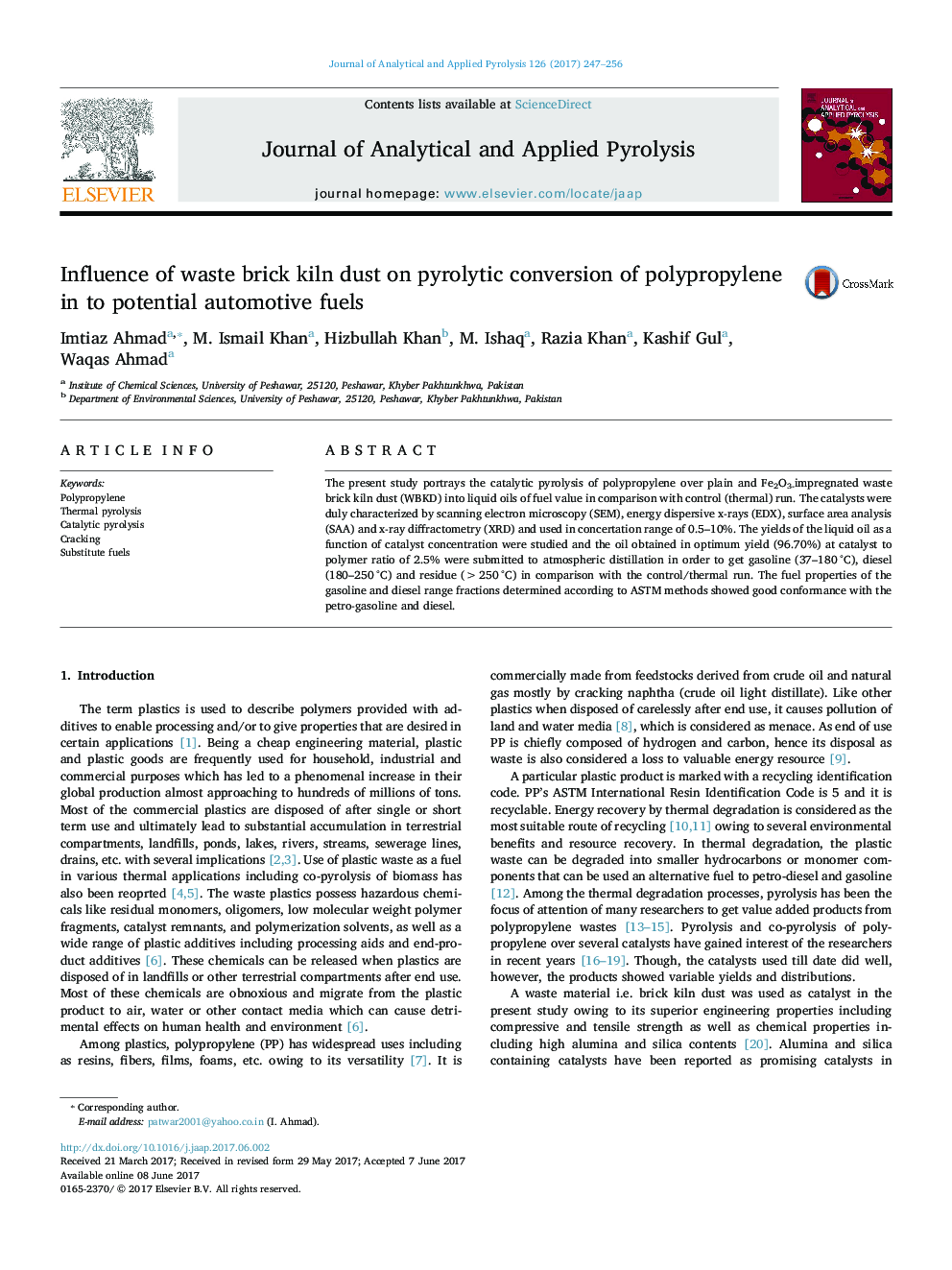| Article ID | Journal | Published Year | Pages | File Type |
|---|---|---|---|---|
| 5134678 | Journal of Analytical and Applied Pyrolysis | 2017 | 10 Pages |
â¢Pyrolysis behavior of polypropylene is presented.â¢Plain and Fe2O3-impregnated waste brick kiln dust are evaluated as catalysts.â¢Characterization of the derived liquid oils is discussed.â¢Fuel properties in comparison with petro-fuels are discussed.
The present study portrays the catalytic pyrolysis of polypropylene over plain and Fe2O3-impregnated waste brick kiln dust (WBKD) into liquid oils of fuel value in comparison with control (thermal) run. The catalysts were duly characterized by scanning electron microscopy (SEM), energy dispersive x-rays (EDX), surface area analysis (SAA) and x-ray diffractometry (XRD) and used in concertation range of 0.5-10%. The yields of the liquid oil as a function of catalyst concentration were studied and the oil obtained in optimum yield (96.70%) at catalyst to polymer ratio of 2.5% were submitted to atmospheric distillation in order to get gasoline (37-180 °C), diesel (180-250 °C) and residue (>250 °C) in comparison with the control/thermal run. The fuel properties of the gasoline and diesel range fractions determined according to ASTM methods showed good conformance with the petro-gasoline and diesel.
